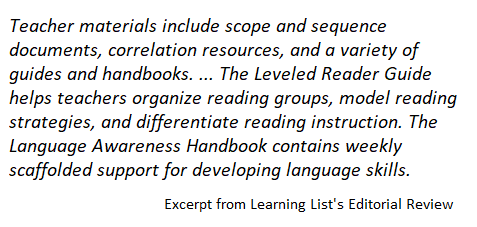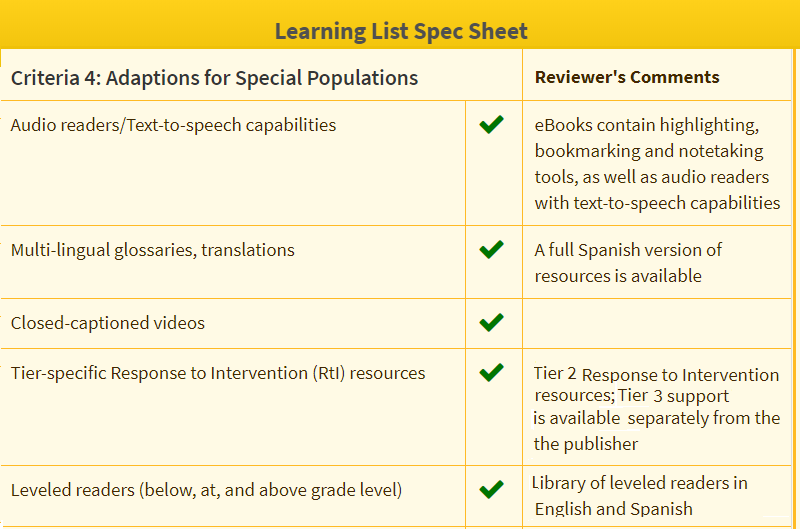As this school year resumes, teachers are going to need to differentiate and accelerate instruction to ensure that students are ready for their new grade level’s content. Whether you are selecting from your district/campus’ existing materials or purchasing new materials, we offer the following questions to help you identify materials that will support teachers in differentiating instruction to meet the needs of their students.
(1) Do the resources offer differentiated planning support for teachers?
Teachers need resources that will help them differentiate instruction to meet their students’ varied learning needs while simultaneously implementing the district curriculum. Here are three features to look for in teacher materials to support teachers in planning differentiated instruction.

- Alternate activities to support scaffolding or extension of learning, such as texts identified by Lexile level, or alternate strategies based on specific learning need;
- Specific tools, such as tier-specific intervention resources and supports for English Learners based on their level of English proficiency; and,
- Progress monitoring tools to assist in identifying student readiness and monitoring progress toward learning goals.
(2) Which adaptions for students are included with the materials?
Adaptions assist students in accessing content and activities for learning. Here are five types of adaptions to look for in student editions to help ensure that all learners will have access to the information presented:

- Visual supports, such as the ability to increase page or font size or text-to-speech screen readers;
- Audio supports, such as closed captioning, full transcripts of videos, or use of relevant visual images;
- Note-taking tools, such as highlighters, digital notebooks, and annotation symbols;
- English Learner supports, such as multilingual glossaries, translations in multiple languages, or instructional suggestions specific to level of English proficiency; and
- Reading supports such as visual cues, narrated text, and embedded definitions of key terms.
(3) Are the materials aligned to the standards they are intended to support?
If teachers believe that their materials are not well aligned, they will forgo the district’s materials and look elsewhere for the resources they need. When selecting comprehensive materials, look for materials that are aligned to 100% of the grade level standards as possible. Keep in mind that publishers and educators often have different definitions of alignment. So, before purchasing a comprehensive material, consult Learning List’s alignment report to verify the material’s alignment.
Supplemental materials typically are not designed to align to 100% of grade level standards. The key to selecting supplemental materials is to make sure that the material is aligned to the standards you intend to use it to support. For example, to be an effective resource for teaching reading, a material does not have to be aligned to 100% of the English Language Arts standards, but it must be aligned to all of the reading comprehension standards.
Learning List’s Spec Sheet, Editorial Reviews and Alignment Reports highlight the features in each material that will support teachers in differentiating and/or accelerating instruction.